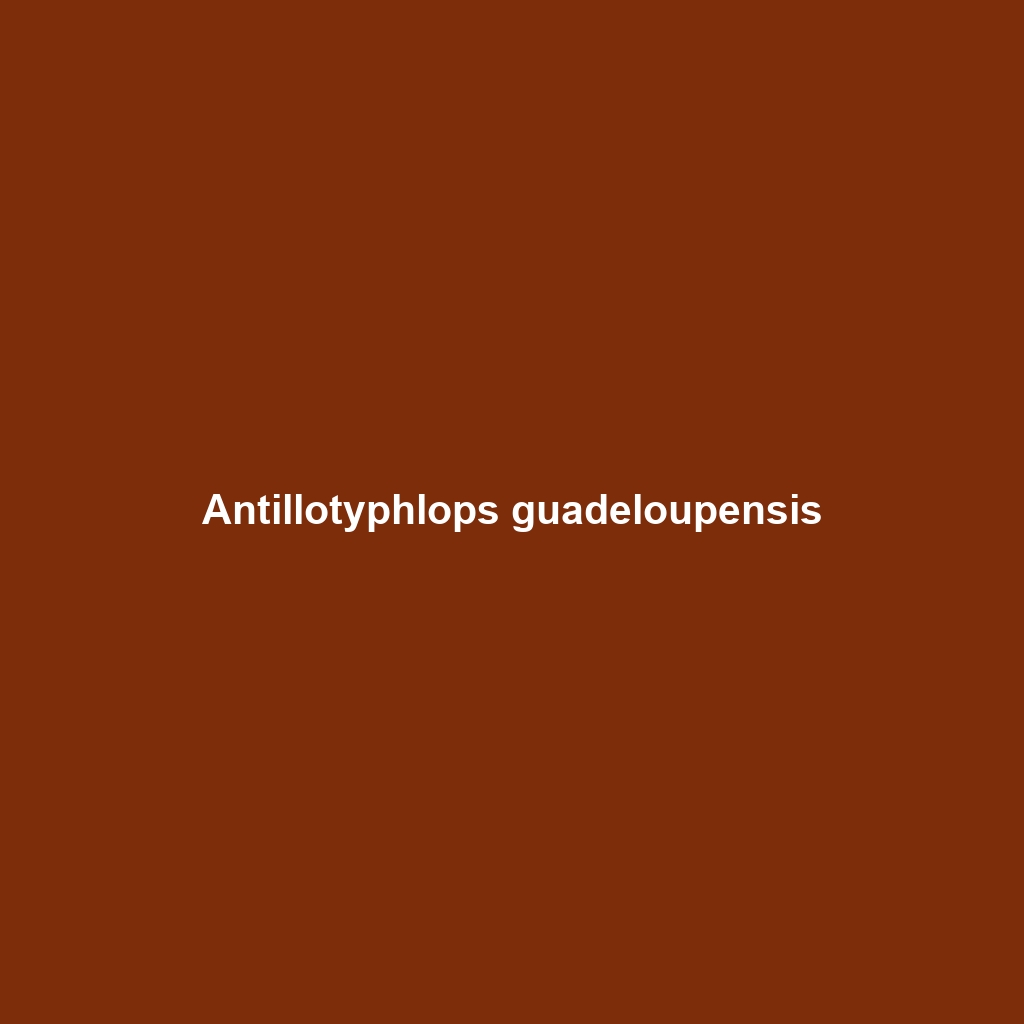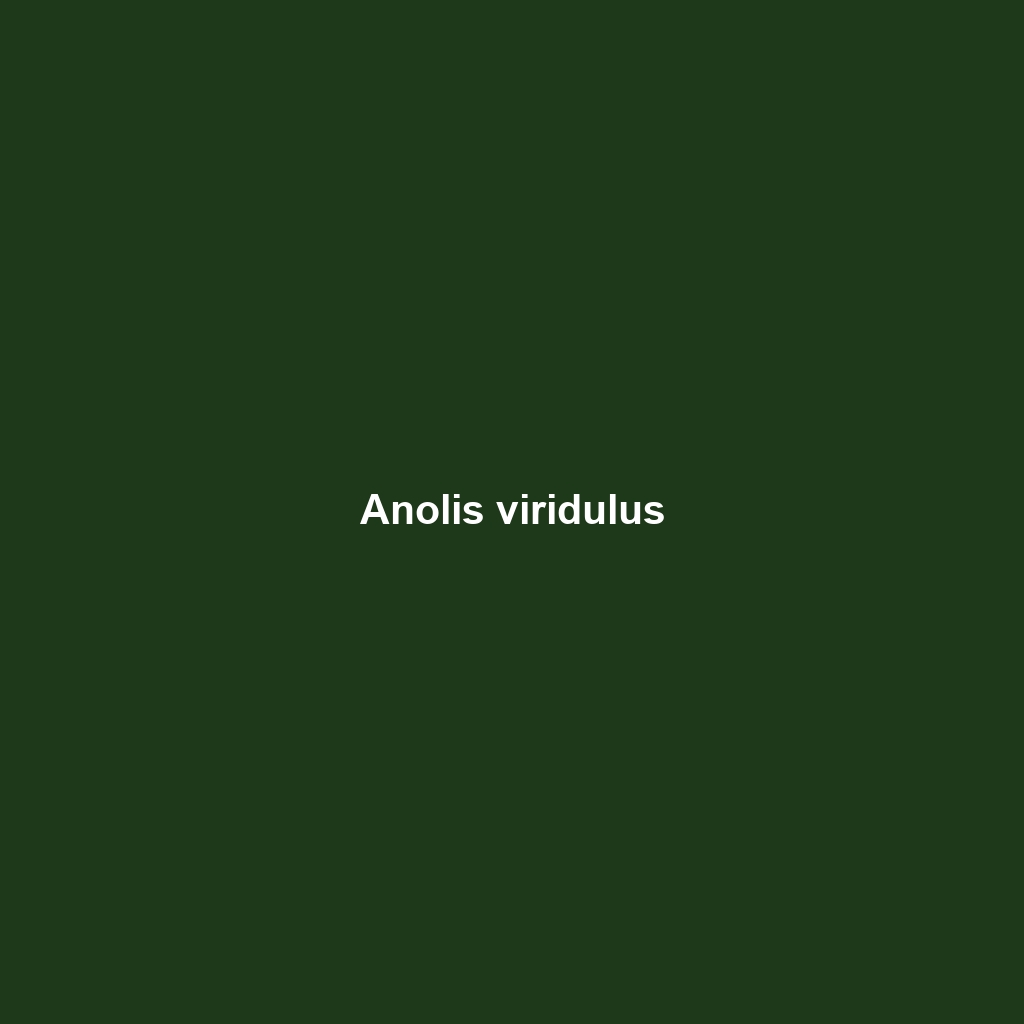
Tag: habitat loss
-

Aparallactus capensis
Discover the unique Aparallactus capensis, or Cape blind snake, known for its subtle and slender form, nocturnal habits, and vital role in soil aeration as it thrives in the diverse habitats of southern Africa. This fascinating species primarily feeds on small invertebrates, exhibiting gentle behavior and remarkable adaptations to a burrowing lifestyle.
-

Antillotyphlops guadeloupensis
Antillotyphlops guadeloupensis, also known as the Guadeloupe blind snake, is a fossorial species native to the humid forests and grasslands of Guadeloupe. This nocturnal reptile, measuring 30 to 60 cm in length, plays a crucial role in soil aeration and pest control by feeding on soft-bodied invertebrates, while its vulnerable status highlights the need for…
-

Antillotyphlops hypomethes
Discover the Antillean blind snake (Antillotyphlops hypomethes), a small, fossorial species native to the Caribbean islands, known for its distinctive smooth, cylindrical body and secretive behavior. This Vulnerable species thrives in moist, forested environments, primarily feeding on soft-bodied invertebrates while aiding in soil aeration and nutrient cycling.
-

Antillotyphlops catapontus
Discover the Antiguan blind snake (Antillotyphlops catapontus), a small, fossorial species native to Antigua, known for its smooth, cylindrical body, tiny non-functional eyes, and a diet primarily consisting of ants and termites. This nocturnal serpent plays a crucial role in controlling insect populations and aerating the soil in its tropical habitat.
-

Antaresia papuensis
Discover the Antaresia papuensis, or Papua Python, a striking arboreal snake native to the tropical rainforests of New Guinea, known for its complex patterns and nocturnal hunting behavior. With a length of 1.5 to 2 meters, this constrictor primarily feeds on small mammals and birds, playing a vital role in maintaining ecological balance.
-

Anolis wellbornae
Discover the vibrant Anolis wellbornae, a medium-sized lizard native to the tropical forests of Central America, known for its stunning green and brown coloration, impressive climbing abilities, and unique territorial displays featuring a distinctive dewlap. This diurnal species thrives in humid environments, primarily feeding on small insects and playing a vital role in its ecosystem.
-

Anolis viridulus
Discover the vibrant Anolis viridulus, or green anole, a striking lizard native to the humid forests of the Caribbean, known for its remarkable green coloration, dynamic display behaviors, and vital ecological role in controlling insect populations. This slender climber thrives in subtropical foliage, showcasing fascinating adaptability and an intriguing mating ritual marked by the distinctive…
-

Anolis tetarii
Discover the vibrant Anolis tetarii, a medium-sized lizard native to the tropical forests of the Caribbean, known for its striking color variations and unique dewlap displays. Anolis tetarii plays a vital role in its ecosystem by controlling insect populations and serving as a food source for larger predators.
-

Anolis terueli
Discover the Anolis terueli, a vibrant lizard native to the tropical forests of the Caribbean, especially Cuba. This agile, insectivorous species showcases striking green and brown hues, thrives in humid environments, and plays a vital role in its ecosystem by controlling insect populations.
-

Anolis tenorioensis
Discover the vibrant Anolis tenorioensis, a unique lizard native to the tropical forests of Costa Rica, known for its striking green and brown coloration, active diurnal behavior, and climbing prowess. This vulnerable species plays a crucial role in its ecosystem by controlling insect populations and serves as a food source for larger predators.
Search
Popular Posts
-
Clelia clelia
Discover the Eastern Racer, Clelia clelia, a stunning snake native to Central and South America, known for its striking black and yellow scales and agility. This diurnal predator thrives in tropical habitats, playing a vital role in local ecosystems by controlling populations of frogs and small mammals.
-
Craspedocephalus puniceus
Discover the vibrant Craspedocephalus puniceus, or Scarlet-headed Rock Python, known for its striking red head and patterned body, thriving in the tropical forests of Southeast Asia. This nocturnal predator plays a crucial role in its ecosystem, controlling rodent populations while exhibiting unique climbing behaviors and territorial displays.
-
Craspedocephalus gramineus
Discover the Craspedocephalus gramineus, or grassy-headed snake, a vulnerable species native to tropical grasslands in South America, characterized by its greenish-yellow coloration and nocturnal hunting behavior. This slender snake plays a vital role in its ecosystem, preying on small mammals and insects while showcasing impressive camouflage against its natural habitat.
Categories
Archives
Tags
animal adaptations (663) animal behavior (4569) animal reproduction (743) bat species (661) behavior (911) biodiversity (6468) conservation (1670) conservation efforts (1240) conservation status (4275) diet (2087) echolocation (822) ecological balance (1109) ecological role (1096) ecology (783) ecosystem (1467) ecosystem role (2480) ecosystem roles (539) endangered species (2280) environmental conservation (593) grasslands (520) habitat (3199) habitat conservation (813) Habitat Destruction (806) habitat loss (2616) herbivorous diet (517) IUCN Red List (1072) nocturnal (571) nocturnal animals (2678) nocturnal behavior (2108) omnivorous diet (585) physical characteristics (1921) reproduction (2821) rodent (677) rodent species (1325) seed dispersal (2023) Seed Disperser (949) seed dispersers (584) small mammals (1155) South America (769) species description (606) tropical forests (871) Vulnerable Species (3769) wildlife (2504) wildlife conservation (3993) wildlife protection (689)


